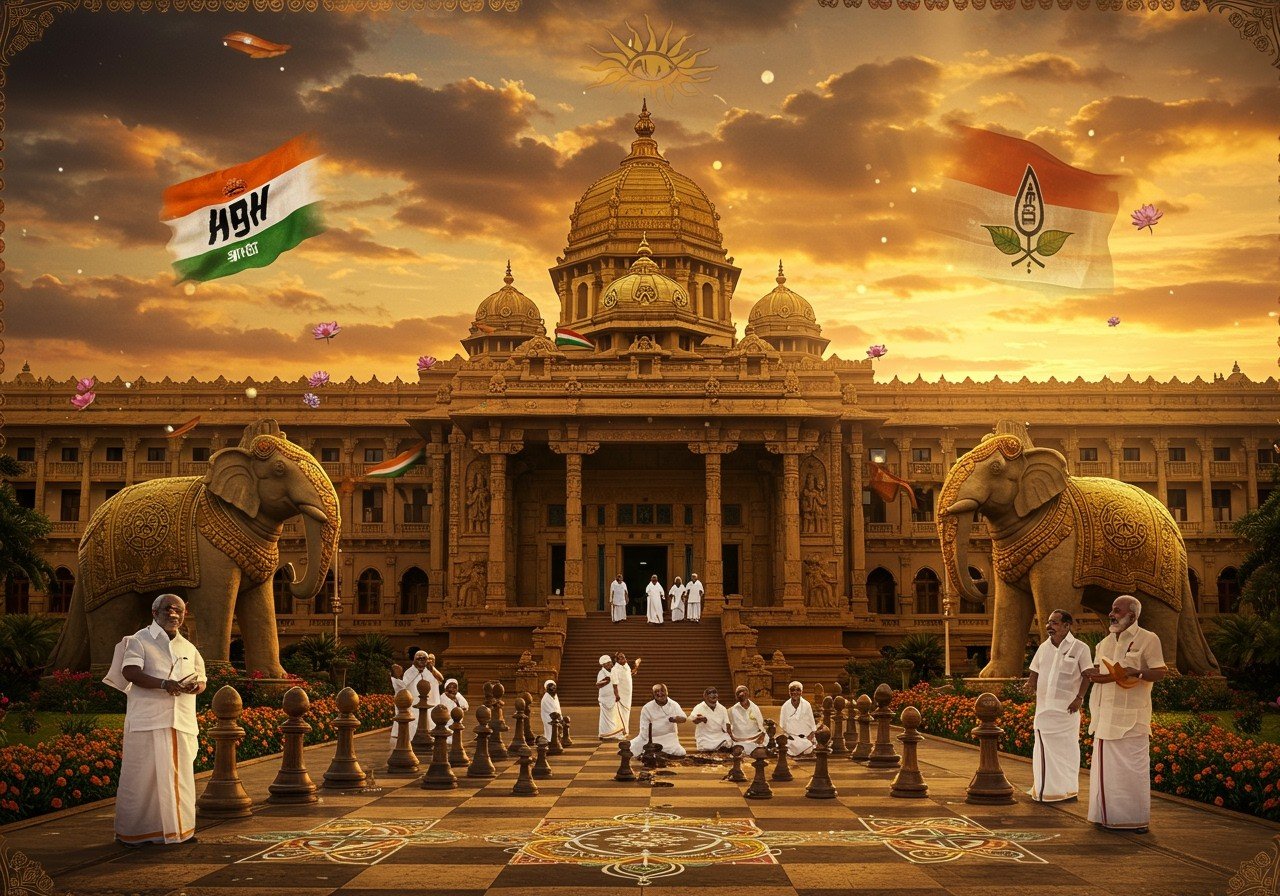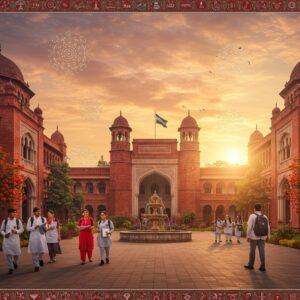
Tamil Nadu, a state renowned for its rich cultural heritage and historical significance, boasts a vibrant and intricate political landscape. This article delves into the multifaceted power dynamics of Tamil Nadu politics, exploring its historical evolution, influential political figures, and the ever-shifting political environment. Comprehending these elements offers valuable insights into the forces that have shaped the state’s political narrative over time.
History of Tamil Nadu Politics
The political history of Tamil Nadu is deeply rooted in social justice and Dravidian ideologies.
- Justice Party’s Role: Established in the early 20th century, the Justice Party laid the groundwork for social justice and anti-Brahmin sentiments. This movement championed equitable representation and social reforms, challenging existing power structures and advocating for a more inclusive society. This set the stage for the Dravidian movement’s rise in later years.
- Periyar E.V. Ramasamy and Dravidar Kazhagam (DK): Periyar E.V. Ramasamy, a prominent social reformer, spearheaded the Dravidar Kazhagam (DK), profoundly influencing Tamil Nadu’s socio-political landscape. His strong advocacy for rationalism and social equality resonated with the masses and laid the foundation for subsequent Dravidian parties. His ideas continue to shape political discourse in the state today.
- Formation of DMK: A split within DK led to the birth of the Dravida Munnetra Kazhagam (DMK) in 1949, founded by C.N. Annadurai. DMK’s ascent to power marked a watershed moment, prioritizing Tamil identity and regional autonomy. The party’s focus on language and cultural pride resonated deeply with the Tamil population.
- Emergence of AIADMK: In 1972, M.G. Ramachandran (MGR), a charismatic film star, founded the All India Anna Dravida Munnetra Kazhagam (AIADMK). MGR’s populist policies and charismatic leadership further transformed Tamil Nadu’s political landscape. His focus on welfare schemes and his connection with the common people cemented AIADMK’s position as a major political force.
- Rivalry between DMK and AIADMK: The enduring rivalry between DMK and AIADMK has defined Tamil Nadu’s political scene for decades. Both parties have alternated in power, implementing various social welfare schemes and engaging in intense political competition. This competition has often led to innovative policies and initiatives aimed at securing popular support.
- Caste and Identity Politics: Caste dynamics and identity politics have played, and continue to play, a pivotal role in shaping electoral outcomes and political alliances. These factors influence voters’ preferences and party strategies, adding complexity to the political landscape. Understanding these dynamics is essential for navigating the state’s political system.
Chief Ministers of Tamil Nadu
The Chief Ministers of Tamil Nadu have left an indelible mark on the state’s political and socio-economic development.
- C. Rajagopalachari (1952-1954): As the first Chief Minister of Madras State (later renamed Tamil Nadu), C. Rajagopalachari laid the foundation for the state’s administrative structure. His leadership during the initial years of independence was crucial in establishing the state’s governance framework.
- K. Kamaraj (1954-1963): Known for his unwavering focus on education and infrastructure development, K. Kamaraj’s tenure witnessed significant advancements in literacy rates and rural development. His emphasis on education earned him the title of “Kingmaker.”
- C.N. Annadurai (1967-1969): Annadurai championed Tamil culture and language through his policies, bolstering regional identity and pride. His efforts to promote Tamil language and culture left a lasting impact on the state’s cultural landscape.
- M.G. Ramachandran (MGR) (1977-1987): MGR introduced groundbreaking populist schemes and welfare programs, including the widely acclaimed midday meal scheme in schools, which transformed Tamil Nadu’s socio-economic fabric. His focus on welfare earned him immense popularity among the masses.
- J. Jayalalithaa (1991-1996, 2001-2006, 2011-2014, 2015-2016): Continuing MGR’s legacy, J. Jayalalithaa implemented various welfare schemes and maintained a strong administrative style. Her leadership and charisma solidified AIADMK’s position as a dominant political force.
- M. Karunanidhi (1969-1976, 1989-1991, 1996-2001, 2006-2011): With a long and distinguished political career, M. Karunanidhi made notable contributions to Tamil Nadu’s development, spearheading infrastructure projects and implementing social welfare programs. His leadership during several terms as Chief Minister shaped the state’s progress.
- Recent Leaders: Edappadi K. Palaniswami (2017-2021) and M.K. Stalin (2021-present) have brought their own distinct governance approaches, prioritizing development projects and addressing contemporary issues facing the state. Their leadership reflects the evolving political dynamics of Tamil Nadu.
Key Aspects of Tamil Nadu’s Political History
Tamil Nadu’s political history is punctuated by significant movements, electoral strategies, and policy decisions.
- Anti-Hindi Agitations: The anti-Hindi agitations of the 1960s profoundly shaped Tamil Nadu’s political identity, emphasizing linguistic pride and regional autonomy. These agitations played a crucial role in defining the state’s distinct political character.
- Cinema and Politics: The influence of cinema on Tamil Nadu politics is undeniable, with film stars like MGR and Jayalalithaa leveraging their popularity to gain political power. The intersection of cinema and politics is a unique characteristic of the state’s political landscape.
- Electoral Strategies: Welfare schemes and populist measures have become central to electoral strategies, underscoring the importance of social welfare in Tamil politics. Parties often compete in offering welfare programs to gain popular support.
- Coalition Politics: Coalition politics have also played a significant role, with regional parties often wielding influence in national politics during both UPA and NDA eras. Tamil Nadu’s regional parties have played a key role in shaping national political alliances.
- Economic Liberalization: External factors like economic liberalization and globalization have impacted Tamil Nadu’s political landscape, presenting new challenges and opportunities for development. The state has adapted to these changes, seeking to attract investment and promote economic growth.
- Social Media Influence: In recent elections, social media and digital campaigns have become indispensable tools for political communication, reflecting the evolving dynamics of voter engagement. Political parties are increasingly leveraging social media to connect with voters and mobilize support.
Tamil Nadu’s Evolving Political Scene (2024-2026)
Tamil Nadu’s political landscape is undergoing significant transformations, particularly with the potential alliance between AIADMK and BJP in anticipation of the 2026 Assembly elections. The BJP has experienced substantial growth in the western and southern regions and is strategically positioning itself to secure a majority. Historically, power has oscillated between the Dravidian giants, DMK and AIADMK, since the decline of the Indian National Congress in the 1967 elections. Caste dynamics and regional strategies continue to play crucial roles in shaping political outcomes in the state.
Conclusion
Tamil Nadu’s political landscape is a captivating tapestry woven from history, culture, and evolving strategies. Deeply rooted in Dravidian ideologies and social justice movements, the state’s politics have been molded by influential figures and pivotal events. The enduring rivalry between DMK and AIADMK, coupled with the impact of cinema and social media, underscores the unique dynamics at play. Understanding these elements offers invaluable insights into the forces shaping Tamil Nadu’s political narrative. As the state continues to evolve, its rich political heritage remains a guiding force, shaping its present and future trajectory.
For those seeking to deepen their understanding of India’s rich spiritual traditions, Poojn.in offers a wide selection of puja items and cultural goods. Explore our collection today and discover the perfect items to enhance your spiritual practice. https://www.poojn.in/product/11061/original-athizay-stone-shiva-lingam-and-nandi-set-4-no-4-5-inch-height-shiva-lingam-and-3-inch-long-nandi-bhagaban
For more insights into Andhra Pradesh’s cultural heritage, visit: https://www.poojn.in/post/16418/andhra-pradesh-a-spiritual-and-cultural-exploration


